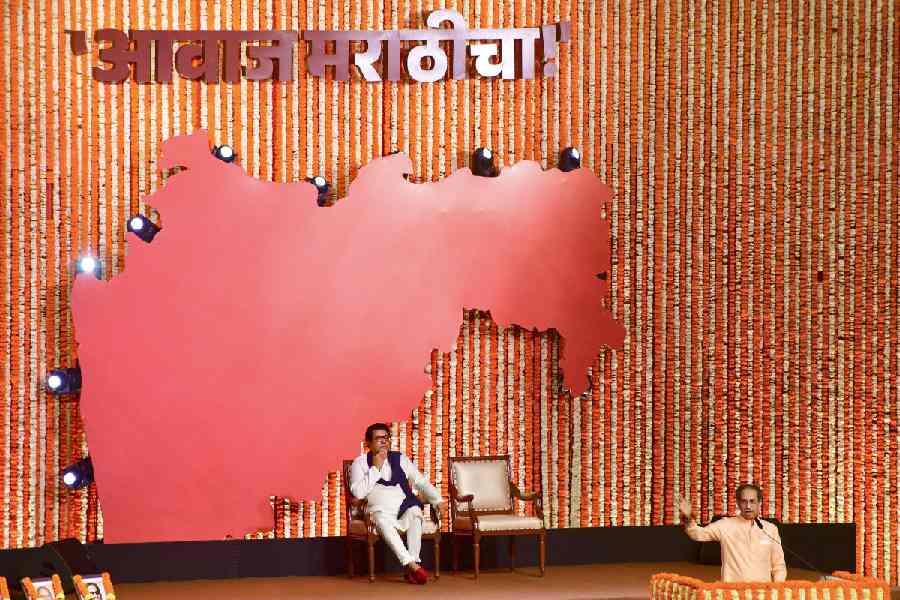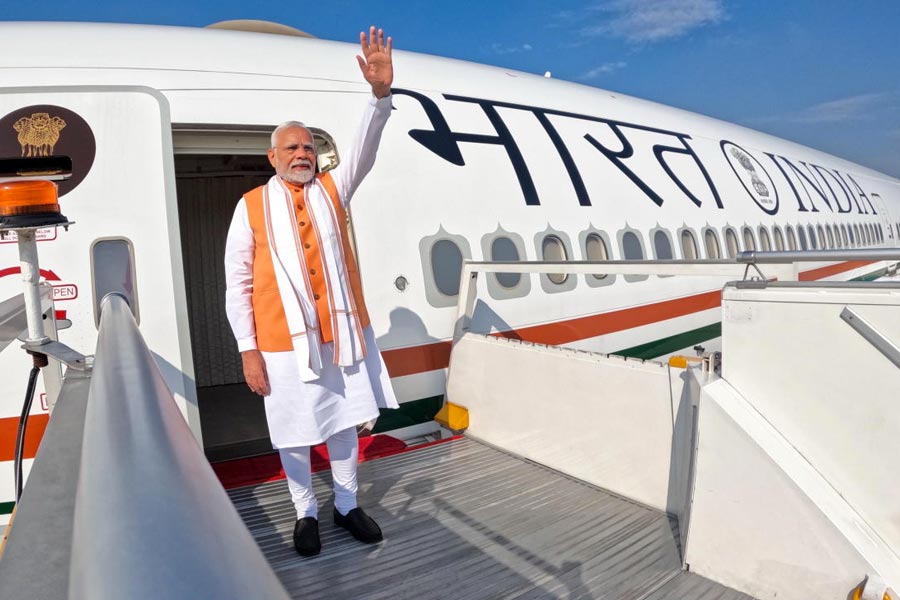|
|
| Khan Abdul Ghaffar Khan, Mira Behn and others |
Mira & the Mahatma,
By Sudhir Kakar,
Penguin, Rs 395
This book, a mixture of fact and fiction, is a novel about the relationship of Mahatma Gandhi and Madeleine Slade, daughter of a British admiral, later to be known as Mira. It uses some well-known historical material, such as Gandhi?s letters, to construct a narrative that, with all its inventions, still manages to impress the reader as true to life.
The shift from fact to fiction is already signalled by changing Madeleine to Madeline. The prologue, reporting on the writer?s meeting with Mira in Austria, sounds authentic until one realizes that it has been dreamt up. It is Navin, the narrator, who had a bit too much to drink at an Indian embassy reception in Vienna. This is the first of many examples of the skilful manipulation of time that enables Sudhir Kakar to reclaim a space between history and imagination for his yarn. Assisted by a gentle irony that illuminates the entire novel, it helps to diffuse some of the tensions with dry comments inviting a smile and understanding.
Kakar often collapses several events in order to create his image of the essential Mira. Those of the years 1925-1927, starting with Slade?s arrival in Sabarmati Ashram, are compressed into a single logical progression. Reading about this difficult period, one often wonders how she would be able to persist in her quest for spiritual and emotional fulfilment by being close to Gandhi in order to serve him personally. Kakar?s achievement is to avoid the facile interpretation of sexual attraction. Instead, he juxtaposes the trauma of her unrequited and brutally repressed love for the ageing Scottish pianist, Frederic Lamond, to her love of Gandhi, sublimated into utter devotion. Her memoirs testify to this by humourless concentration on Gandhi and herself with little or no room in them for those people equally close to the Mahatma, or for the exciting events of those times. Kakar fills this gap.
In the novel, she is given a new voice, particularly in her imaginary correspondence with Romain Rolland who had inspired Slade to join Gandhi. By this device Kakar enables her to express feelings inhibited by the real Mira?s self-imposed reserve. Thus he creates a Mira with whom one can sympathize, something her own writing almost always prevents. These fictional letters offer the reader a psychoanalyst?s insight into her emotional struggle. The author quietly slips in cues about what might have been the underlying problems. He sees the tragedy of an English woman in search of god and a monastic life. Rolland had led Madeleine to expect ?a new Jesus?. Gandhi refused to assume the role of god, deeming her behaviour to be idolatrous. She made up for this by inventing monastic acts that symbolized a nun?s initiation. Here again a development that took all of two years has been compressed into a brief span, with telling effect. Gandhi, however, was not impressed. He had, indeed, firmly rebuffed her attempts to cling to him. Yet he permitted her to act as a close attendant, giving in to her demands that she be allowed to render personal service to him. The result was inevitably a see-saw of emotions when, prompted perhaps by her desperate attempt to find some equilibrium in her life, she fell for a charming adventurer of her own age, Sardar Prithvi Singh. This time she did not hold back her emotions at all. She wanted to marry him but Singh did not want to bind himself to her. The narrator does not ridicule Mira?s infatuation. On the contrary, he admires her courage to express her desires openly. Maybe the psychiatrist-author appreciates this as a step towards shaking off her repression at long last. For the first time during those years she began to clearly formulate a role for herself in India, which by then had become her exile.
The narrator, Navin, loses contact with Mira around that time. He knew that she had set out on her own to found some smaller ashrams in Bihar. Her last direct involvement in Indian politics, when she was on a mission to explain the Quit India Resolution to the Viceroy and investigate possible methods of anti-Japanese resistance in Orissa, has no place in the story. Navin reports her two-year incarceration in 1942-1944 together with Gandhi, Ba, Mahadev Desai and Sushila Nayyar. Not much detail about her daily prison-life is known apart from what we have in Mira?s own writing. It speaks well of the author?s kindness that this period of turbulence is missed out from the narrative. For, in fact, it was then that the foundation had been laid for a harsher separation from Gandhi as well as for Mira?s transformation into a maturer woman.
Navin?s accidentally getting to know after nearly 30 years that Mira was living in Austria and visiting her is mostly invention. Mira left India in 1959 and visited England first. She found a changed country. There was no coming back home for her. So she left again and settled in the Austrian countryside which had inspired Beethoven, who was her very first love. Understanding him became the sole purpose of her life in another exile. She was to pursue this project till the end of her days.
Navin?s description of Mira?s Austrian home is flawed in detail but true in essence. He writes about the tea and biscuits served by Mira?s Indian servant, Rameshwar Datt. Anyone who knew Mira in Austria was acquainted with those biscuits. Not many of those who enjoyed them paid much attention to the servant. Kakar is the first to explicitly draw attention to this lonely character. Did he really ask to be rescued from exile? Plausibly, yes. The people with whom he shared the last years of his stay in a tiny hamlet still remember him with affection. They had wanted him to stay there with them after Mira?s death and claim he had wanted to do so.
In this beautifully written novel, the author presents a Mira who responds much more openly to people than the real Mira does in her memoirs. He endows her with a humanity and warmth that makes her likeable. His portrayal goes some way towards explaining the enduring loyalty and friendship Mira?s memory still evokes among her Viennese friends.











